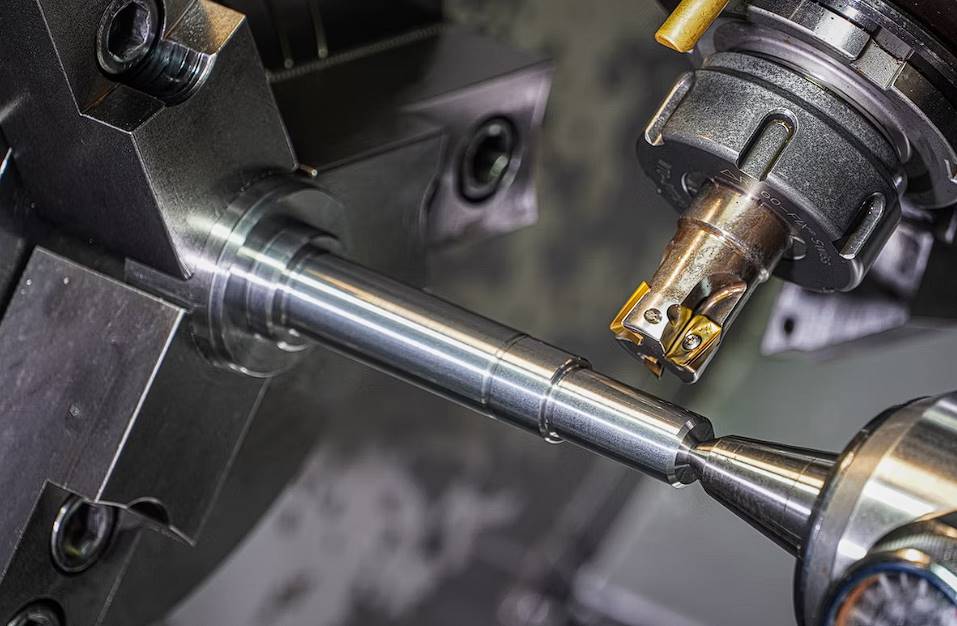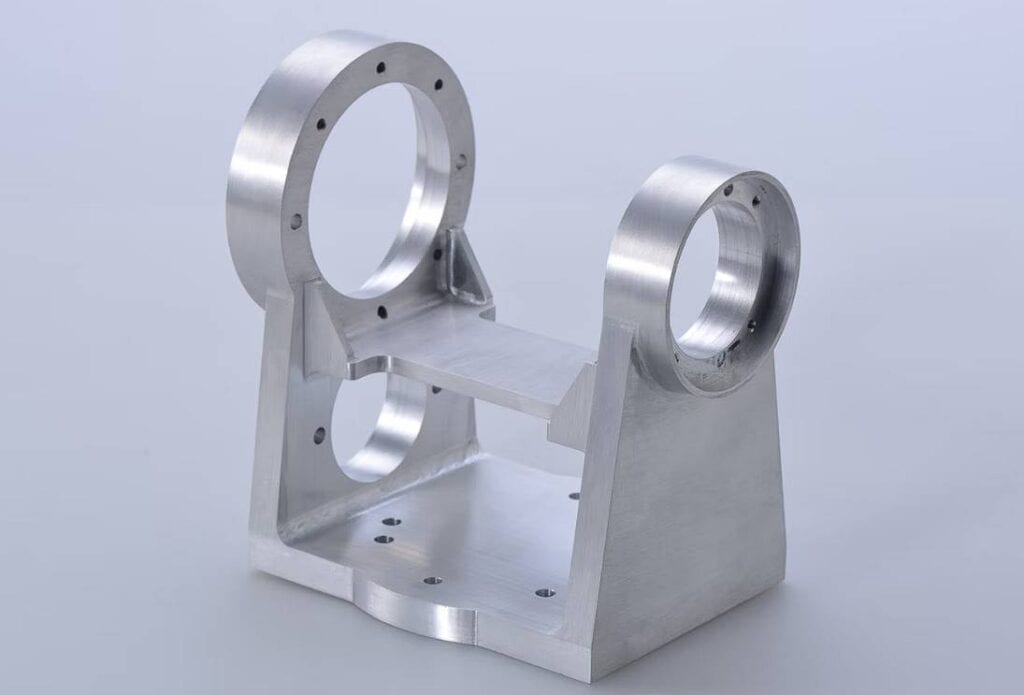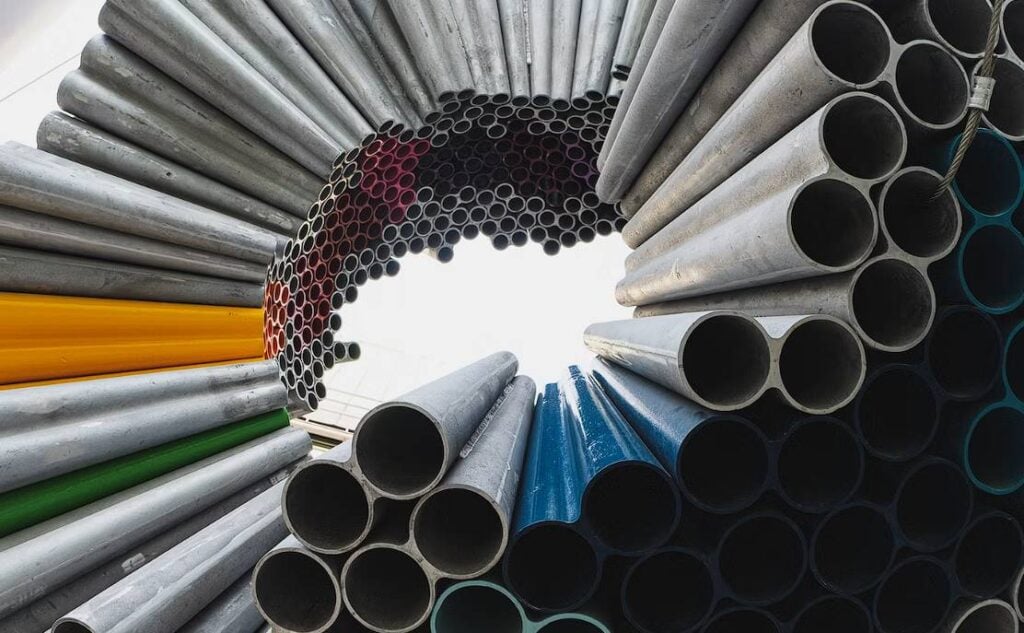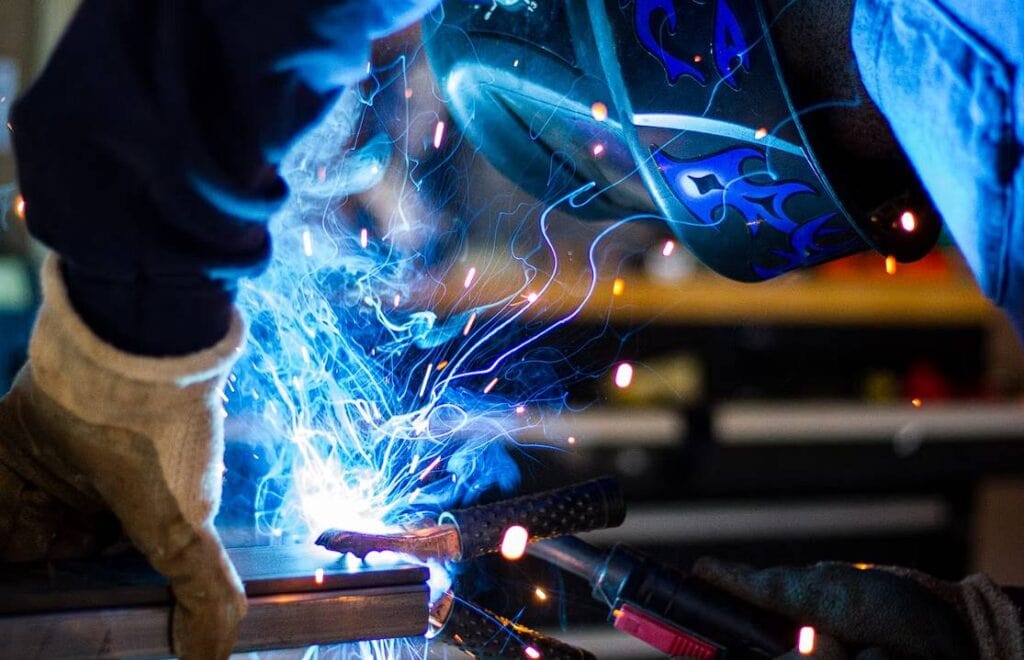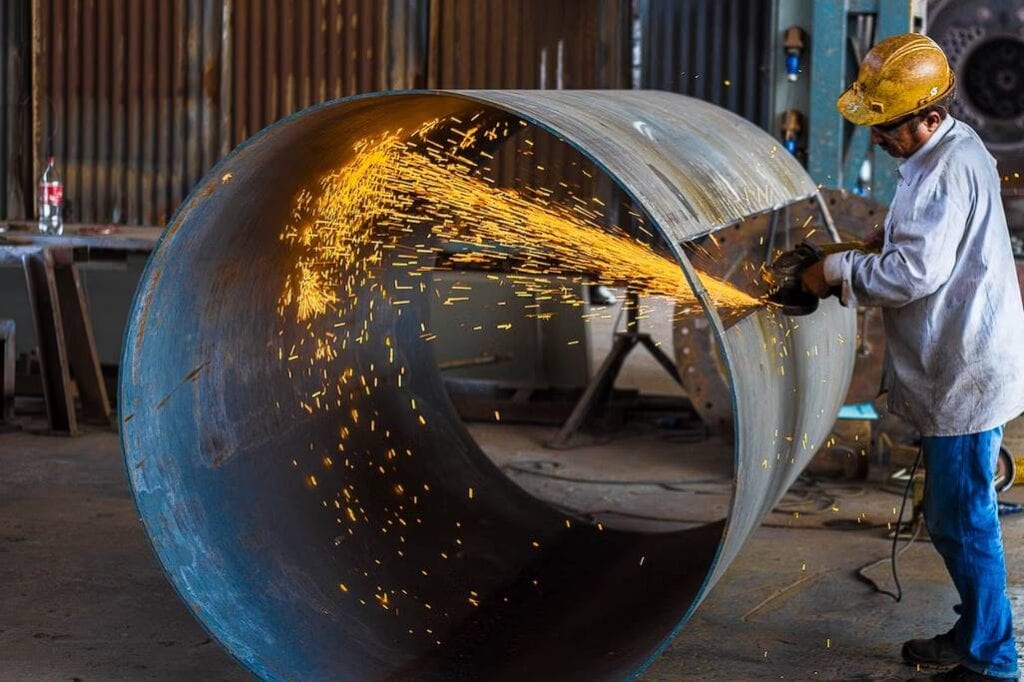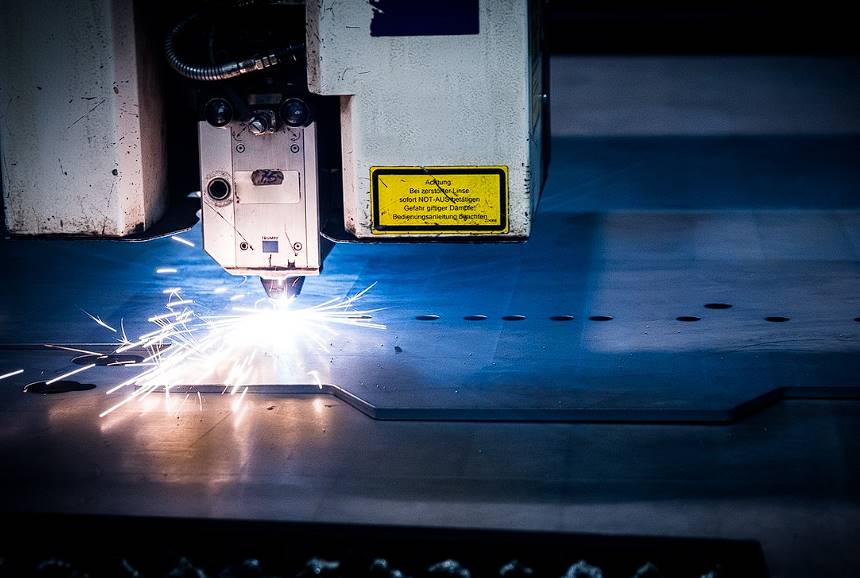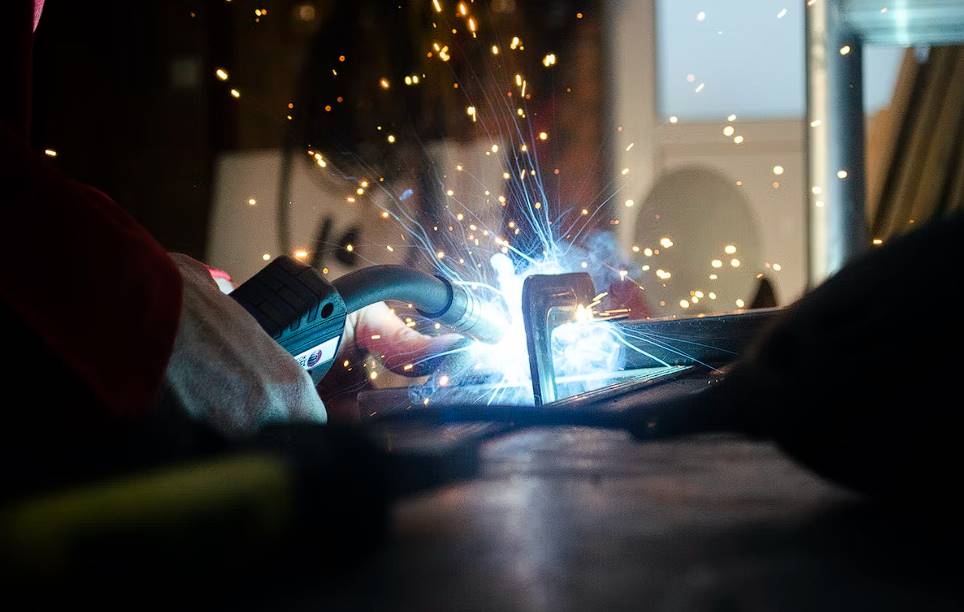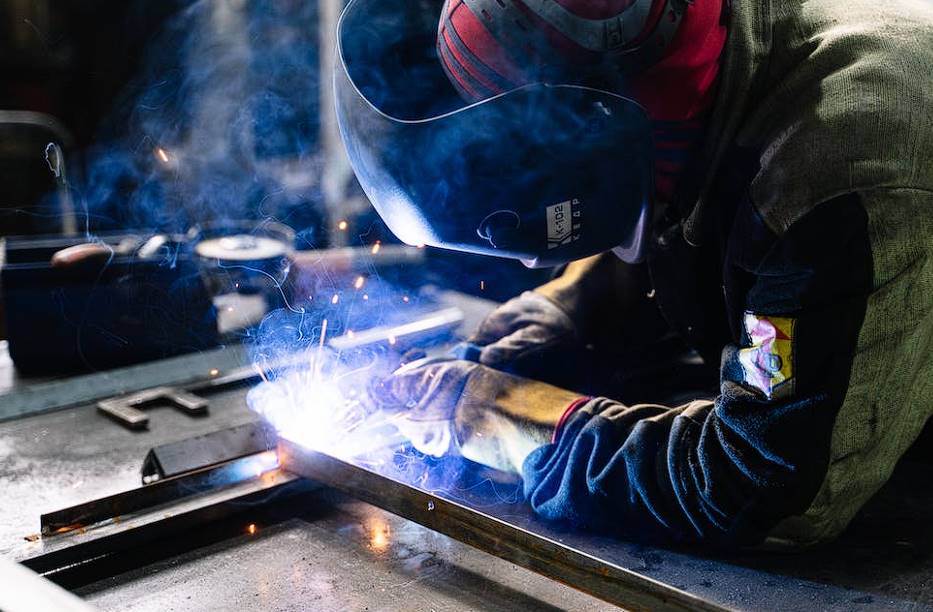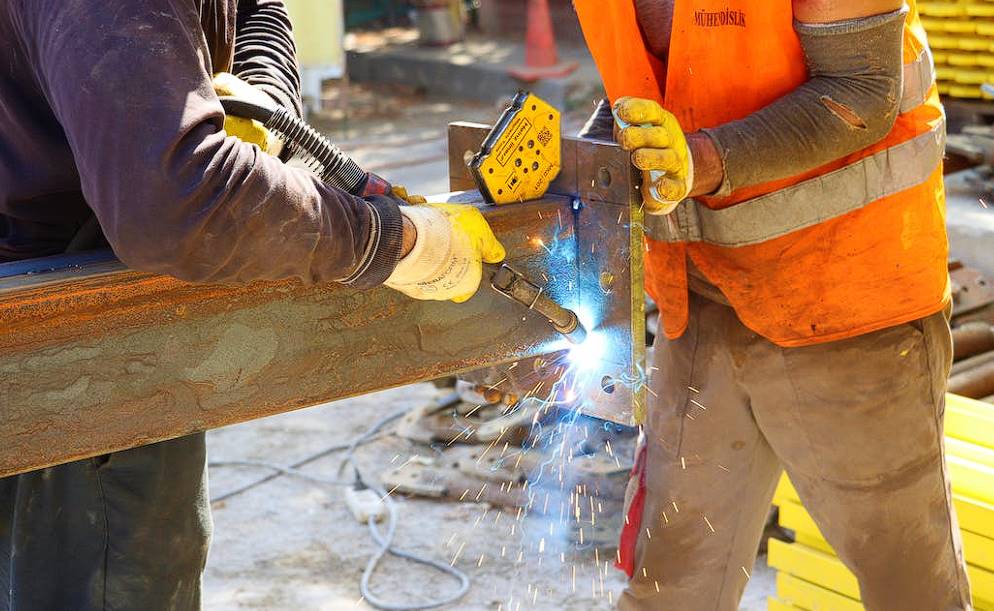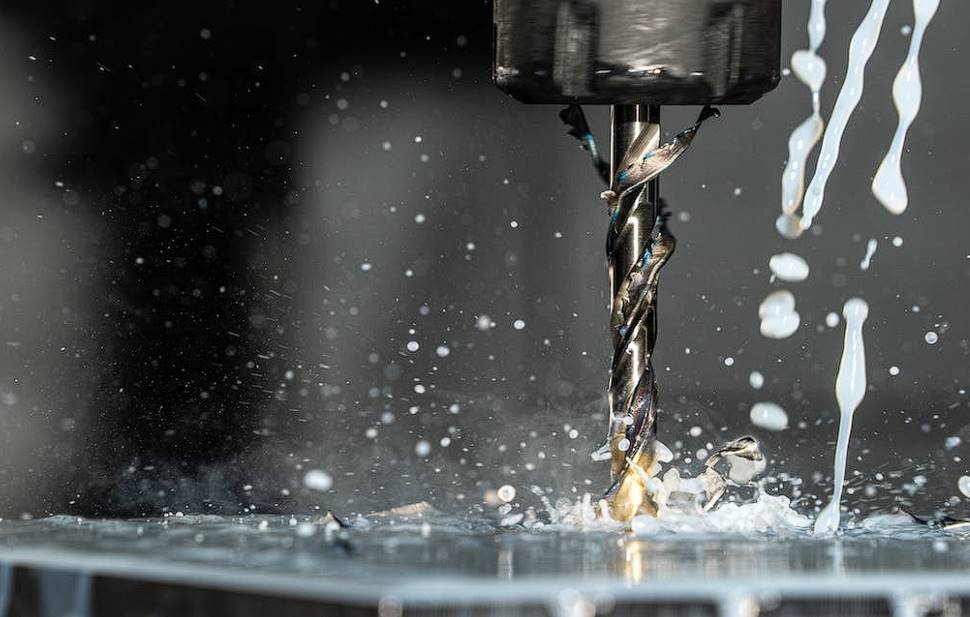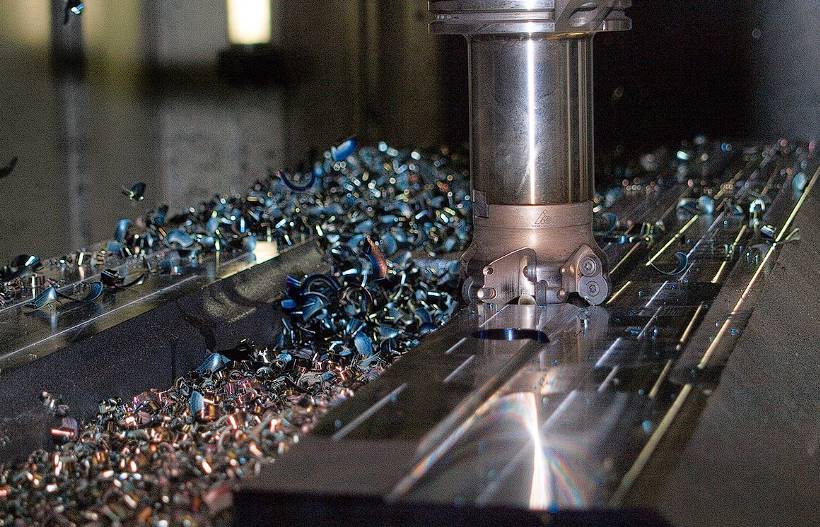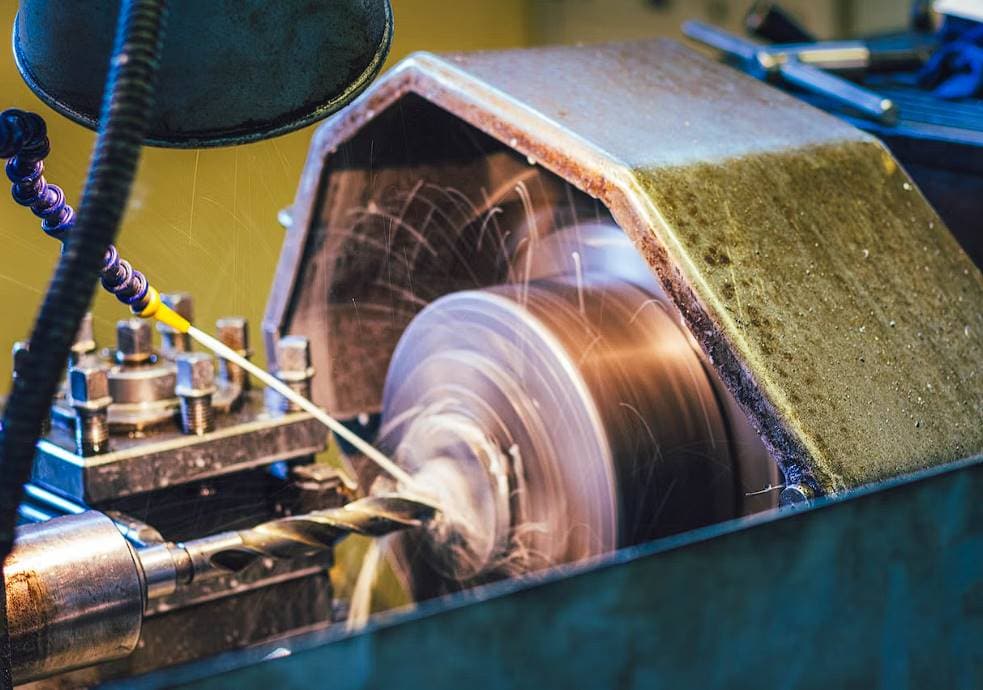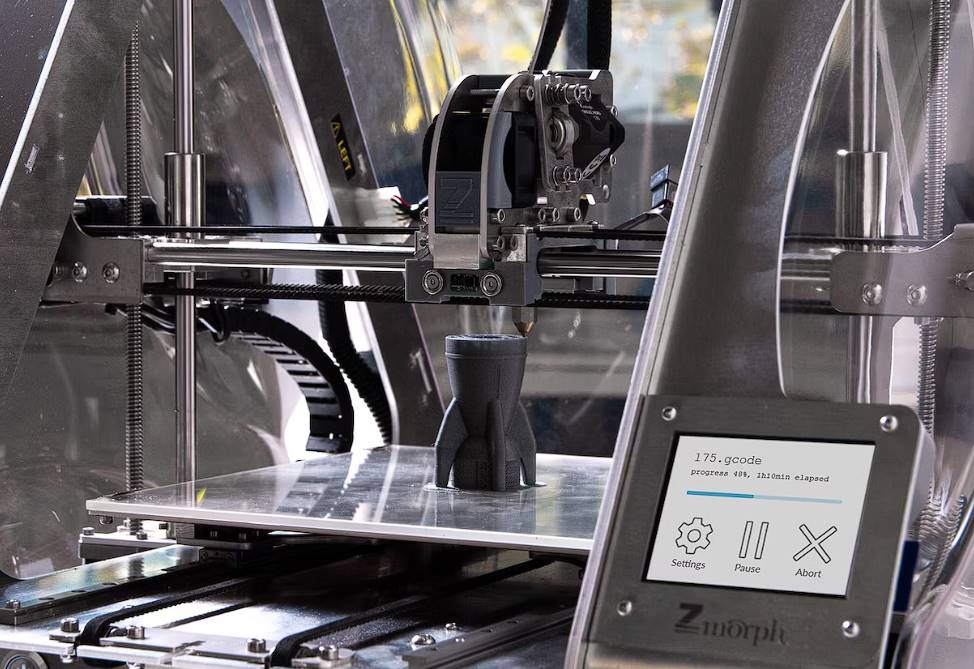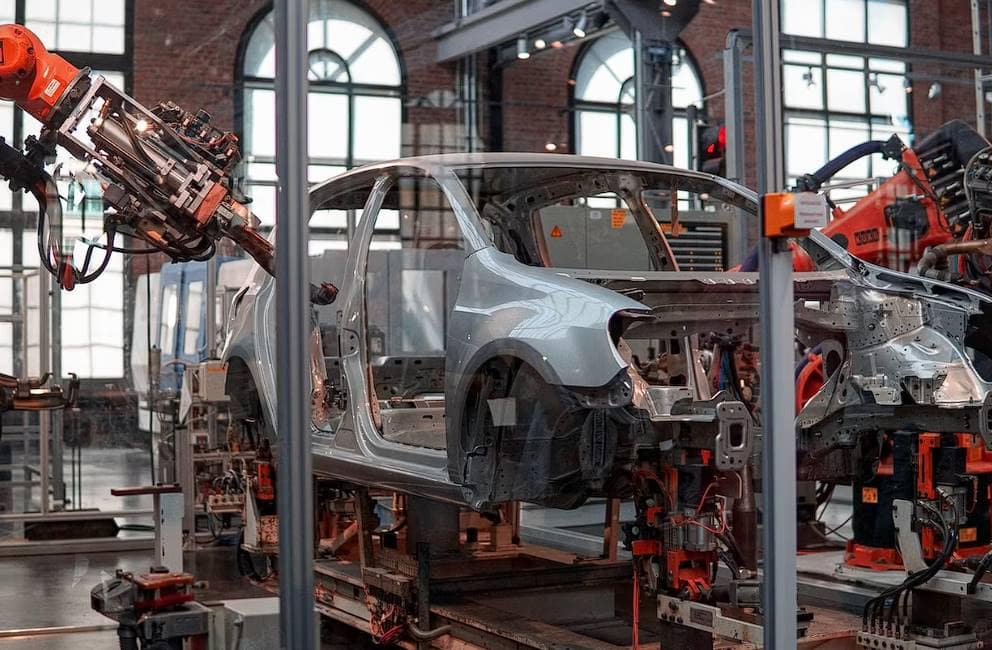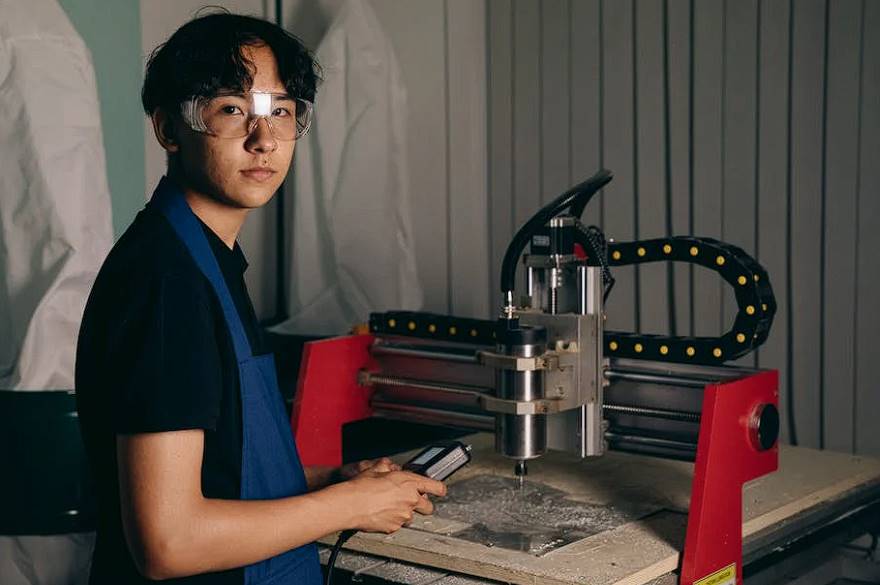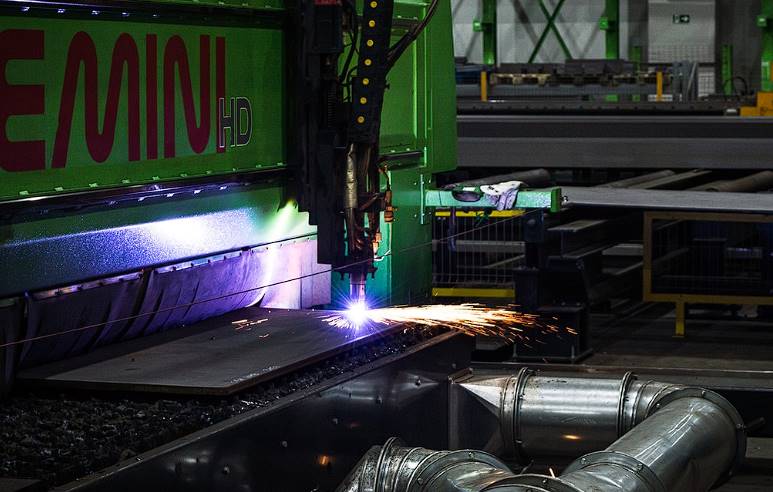CNC machining, or "Computer Numerical Control" machining, is a widely utilised manufacturing method that uses computer-controlled machines to accurately carve, form, and produce diverse materials. This cutting-edge technology has completely transformed the manufacturing sector, allowing for greater productivity, precision, and adaptability. CNC machining has many advantages, but like any industrial process, it has its dangers.
Knowledge of these dangers is essential to keep operators safe and the workplace secure. The full potential of this technology can be realised while protecting the health and safety of everyone employed if the risks connected with CNC machining are mitigated, and appropriate safety measures are put in place.
In this blog, we'll look at the potential dangers of CNC machining and how they can be mitigated.
What Is CNC Machining?
The term "CNC machining" describes the production and processing of parts and products directed by a computer. Utilising computer numerical control (CNC) machine tools, this process automatically processes and adjusts a workpiece to remove unwanted material.
CNC machining typically employs metallic materials and yields a final product or component.
Subtractive manufacturing refers to CNC machining, in which computer programmes are used to regulate the motion of the machine tools. CNC machine tools are used in a wide variety of industries, but turning, grinding, milling, turning, and EDM are the most common types and processes.
Milling is a process that entails the elimination of material from a workpiece's surface by rotating a cutter in one of three, four, or five distinct orientations. Metals with intricate geometries or that require precise cutting or trimming can be processed rapidly using this method.
When making cylindrical components, however, a lathe is used for turning. As the workpiece spins on the shaft, it comes into contact with the precision turning tool, which cuts not only radial but also axial holes, grooves, and chamfers.
CNC machining is much more efficient and accurate than conventional machining, which is done by hand. The final product is in keeping with the computer design.
Although computer numerical control manufacturing (CNC) can produce finished goods and components, it is most cost-effective for rapid prototyping.
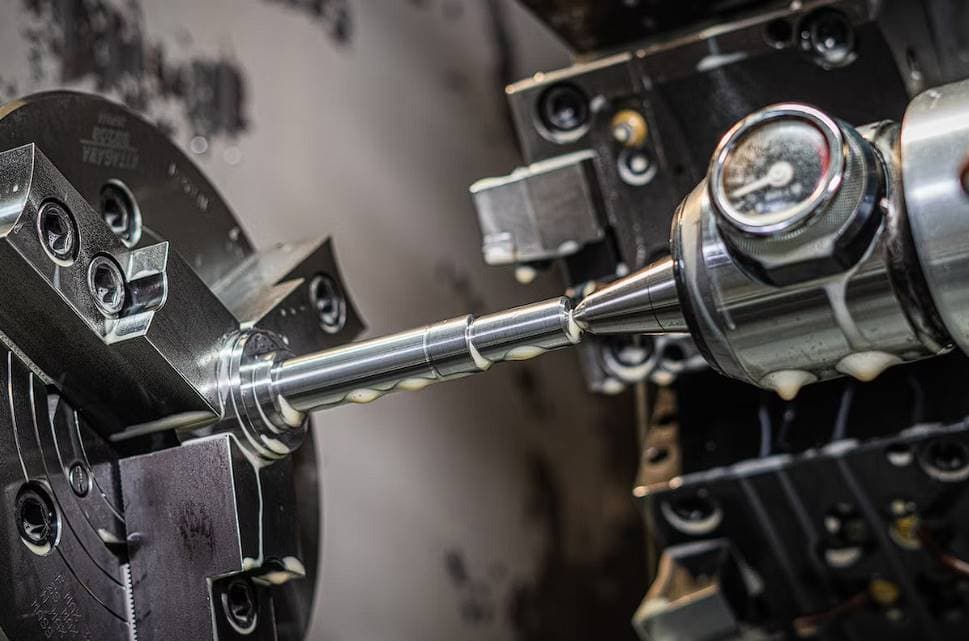
Understanding The Hazards Of CNC Machining
CNC machining, also known as computer numerically controlled machining, uses CNC machines to manufacture complex and intricate parts. Drilling, turning, milling, and cutting are just some of the many operations CNC machines can perform quickly and precisely.
You should be informed of the potential health and environmental risks associated with CNC machining before operating or being in close proximity to such equipment. Here, we'll go over some of the more typical dangers and difficulties of CNC machining and some strategies for avoiding or mitigating them.
Despite existing safeguards, CNC machining still has some potential risks that must be mitigated. Some typical risks include:
Machine Hazards
Potential machine hazards like moving parts, sparks, hot surfaces, sharp edges, chips, and noise seriously threaten workers' health and safety during CNC machining. Cuts, bruises, burns, fractures, loss of hearing, and damage to the eyes are just some of the injuries these risks can cause.
Wearing protective gear like gloves, earplugs, goggles, and shoes is essential for staying safe when these hazards present themselves. Never adjust a running machine, or reach into it for any reason without first turning it off and waiting for it to stop moving before attempting to do so.
Energy Consumption
High energy consumption from the machines is another concern for the environment when it comes to CNC machining because it can increase the production of glasshouse gases and potentially impact global warming. CNC machines can eat up a lot of power when running for extended periods or at high speeds.
These issues can be mitigated by adjusting various machine settings and parameters, such as the spindle speed, feed rate, and depth of cut, for optimal performance and efficiency. In addition to the typical maintenance, always remember to turn off the machine before putting it away.
Chemical Hazards
Chemical hazards, such as those posed by coolant, lubricant, solvent, and metal dust, represent a third potential threat during CNC machining. Skin irritation, allergic reactions, respiratory issues, and even cancer are all possible outcomes of exposure to these chemicals.
The proper use of coolant and lubricant and safe disposal of waste can significantly lessen the likelihood of these problems occuring. Wear protective equipment like masks, gloves, and aprons, and make sure the area you're working in has plenty of fresh airflow. Regular maintenance of the machine and the surrounding area is also required, as is avoiding chemical inhalation and ingestion.
Electrical Hazards
Electrical hazards such as fires, shocks, and explosions are another concern with CNC machining. Wiring problems, insulation failure, improper grounding, and power surges are all potential causes of these dangers. Serious injuries, including cardiac arrest, burns, electrocution, and nerve damage, can result from exposure to electrical hazards.
To prevent these risks, you should always inspect the machine and its components for any signs of wear and tear and report any problems to a qualified technician. You should also avoid touching exposed wires or metal parts and use a circuit breaker or a fuse to protect the machine from overloading.
Waste Management
CNC machining creates a lot of waste, including metal chips, lubricant, coolant, and packaging, which is a major problem for the environment. Pollution, contamination, and depletion of natural resources are just some of the ways in which these wastes can damage the planet.
Waste management practices, such as recycling, reusing, and waste reduction, can help with these problems. Use environmentally friendly options and adhere to local guidelines and regulations when disposing of hazardous waste.
Social Responsibility
Finally, the social responsibility of CNC product manufacturers, operators, and consumers is an environmental issue related to CNC machining. CNC machining has both positive and negative societal effects, including the creation of jobs, enhancement of quality, reduction of costs, displacement of workers, violations of rights, and harm to communities.
You should think about how your choices and actions will affect others and the environment, and you should adhere to fairness, sustainability, and transparency standards to make sure your CNC machining is done right.
Safety Considerations For CNC Machining
Implementing various preventative safeguards is required to perform CNC machining operations in a manner that is free from risk. These precautions are intended to reduce potential dangers, provide protection for operators, and make the working environment more secure. Let's go over some of the most important precautions for working with CNC machines:
Let's look at some of the most important safety precautions for CNC machining:
Use Only The CNC Machines You Have Received Training To Operate.
Protecting workers during CNC machining may appear to be a no-brainer. It's shocking that some businesses let inexperienced workers handle CNC machines with little to no instruction.
Insufficient training frequently causes avoidable mishaps and incidents. To reduce the dangers posed by inexperienced workers, businesses must place a premium on thorough training and education. As a result, the likelihood of accidents is reduced, and a more secure workspace is created.
Avoid Letting A Bar Protrude From The Spindle.
This is an issue that has less to do with G-code programming and more to do with the application or process being used. Bar feeders are commonly used in manufacturing facilities to machine multiple parts from a single bar. CNC lathes are frequently used for bar-feeding, which is true. An entire bar, up to 15 feet (5 m) in length, is contained within a bar feeder. The bar can rest securely on this.
Some businesses do not need bar feeding. Bar pullers are used instead of bar feeders when the opportunity arises. During the bar "feed," a specialised tool housed in the turret is used to draw the bar. In such uses, the bar must always be kept short of the machine's spindle. If it does, the protruding part will be unsupported, even if only slightly.
When the spindle reaches machining speeds, the bar will rapidly bend to a ninety-degree angle at the spindle due to internal stresses. This crooked section of the bar could break off and fly across the workshop. Alternatively, it could remain attached. But in either case, it's going to be disastrous, both for the machine and for any bystanders.
Watch Out For Turning Centres When Using Cutting Tools.
Those who work only with free-machining materials (like aluminium or wax) or make only shallow cuts need not worry about this (like finishing operations). Make that the hand of tools you're using for forceful operations (such as rough boring, turning, or facing) allows the amount of force that the machine's bed and way systems are expected to absorb as a result of the machining process rather than pulling the machine components apart and introducing play in the way systems. The machine will start to chatter and have sizing problems after some time has passed.
Avoid Harsh Cutting Conditions And Inadequate Workholding And Support.
The process used to generate the G-code programme may not be solely responsible for the problems mentioned above, but it does have an impact on them. Due to their inherently dynamic nature, pressures generated by machining operations must never go beyond what can be safely handled by either the machine or the work-holding device. To keep CNC machining processes risk-free and productive, the programmed machining operations must never exceed the capabilities of the machine or the work-holding device.
Always Keep At Least One Person On The Lookout For The CNC Machine.
The temptation to leave the room while a computer numerically controlled machine (CNC) completes a series of predetermined tasks can be great. Despite appearances to the contrary, CNC machines, like any other piece of mechanical equipment, are not immune to breakdowns or malfunctions. Injuries are possible in such situations.
This means that every CNC machine needs to have at least one person keeping an eye on it at all times. To keep operators safe and reduce the likelihood of accidents, keeping a close eye on the machinery is essential. Maintaining a risk-free workplace requires constant vigilance and supervision because it only takes one unexpected event to cause serious harm.
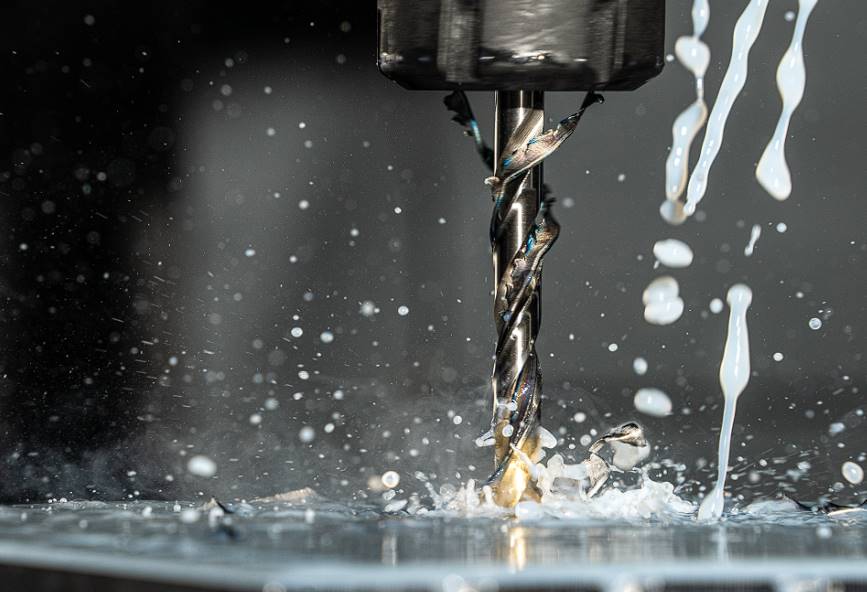
Make Certain That The Rapid Approach Motion Is Safe.
When a cutting tool is brought near a CNC operator for the first time, they are most at risk. It will travel at the machine's fast speed to a spot relatively close to the tabletop. Most programmers' standard rapid approach distance is 0.1 in (about 2.5 mm), though some go even lower.
Make sure the CNC crew is prepared to take charge during the closest point of approach first. This often entails utilising the single block rapid override, feed hold (or potentially dry run), and the distance-to-go screen. The setup crew and the operators must slow the machine to a crawl for the initial approach of each tool.
Rapid approach movements should be programmed consistently so operators and setup staff know what to expect. First, position the tool in the x and y axes of the machining centre. Next, get close to the z-axis. This simplifies things by reducing them to a single axis. Initially, the cutting tool should be held an inch and a half (25.0 mm) from the ground. Then, set it down on the desk. The operator can relax because they know the tool will stop exactly one inch from the surface when in single block mode.
Always Make Sure To Maintain Mental Focus
Do not operate CNC equipment if you are ill and cannot concentrate. Managers, if employees are acting strangely, send them home. If something doesn't seem right to you, a worker, please report it to your superiors. It's preferable to miss a couple of shifts rather than risk injuring yourself or someone else at work. Leaving early is preferable to breaking a machine, resulting in expensive repairs and downtime. Follow those steps, and you can ensure the safety of yourself and your employees.
Conclusion
CNC machining, or computer numerical control (CNC) machining, is a widely used manufacturing method that uses computer-controlled machines to accurately carve, form, and produce diverse materials. This cutting-edge technology has transformed the manufacturing sector, allowing for greater productivity, precision, and adaptability. However, it has its own dangers, which must be mitigated to keep operators safe and the workplace secure.
CNC machining involves the production and processing of parts and products directed by a computer, using computer numerical control (CNC) machine tools to automatically process and adjust a workpiece to remove unwanted material. It is used in various industries, including turning, grinding, milling, turning, and EDM.
Machine hazards, such as moving parts, sparks, hot surfaces, sharp edges, chips, and noise, pose significant health and safety risks. Protective gear, energy consumption, chemical hazards, electrical hazards, waste management, and social responsibility are all essential considerations for avoiding or mitigating these risks.
Machine hazards include moving parts, sparks, hot surfaces, sharp edges, chips, and noise. Protective gear, proper use of coolant and lubricant, and safe disposal of waste can help reduce these risks. Electrical hazards, such as fires, shocks, and explosions, can result from improper wiring, insulation failure, improper grounding, and power surges.
Waste management practices, such as recycling, reusing, and waste reduction, can help reduce pollution, contamination, and depletion of natural resources. Social responsibility is another environmental issue related to CNC machining, with both positive and negative societal effects.
To ensure the safety and well-being of all involved, it is essential to implement preventative safeguards, such as using only the CNC machines that have received proper training. This will reduce the likelihood of accidents and create a more secure workspace.
Lastly, it is crucial to avoid allowing a bar to protrude from the spindle, as this is not related to G-code programming but rather to the application or process being used. By implementing these precautions, businesses can ensure the full potential of CNC machining while protecting the health and safety of all employees. A bar feeder is a device used to securely hold a bar up to 15 feet (5 m) in length. Some businesses do not need bar feeding, but bar pullers can be used when the opportunity arises. When machining speeds reach, the bar will rapidly bend to a 90-degree angle, potentially causing damage to the machine and bystanders.
When using cutting tools, it is important to avoid turning centers and ensure that the hand of tools is able to absorb the force of the machining process. Harsh cutting conditions and inadequate workholding and support are not solely responsible for these issues, but the G-code program generates pressures that must never exceed the machine's capabilities.
Always keep at least one person on the lookout for the CNC machine to keep operators safe and reduce the likelihood of accidents. Rapid approach motions should be safe for the first time, with the standard being 0.1 in (about 2.5 mm). The setup crew and operators must slow the machine to a crawl for the initial approach of each tool.
Rapid approach movements should be programmed consistently to ensure operators and setup staff know what to expect. The tool should be held an inch and a half (25.0 mm) from the ground and set down on the desk.
Maintaining mental focus is crucial when operating CNC equipment. It is preferable to miss a few shifts rather than risking injury or downtime. By following these steps, you can ensure the safety of yourself and your employees in the workplace.
Content Summary
- CNC machining is a widely used manufacturing method.
- It uses computer-controlled machines for precision and productivity.
- CNC machining has transformed the manufacturing sector.
- Safety measures are essential for protecting operators and the workplace.
- Understanding the hazards of CNC machining is crucial.
- Subtractive manufacturing is a type of CNC machining.
- Milling is used for cutting intricate geometries.
- Turning is used for making cylindrical components.
- CNC machining is more efficient than conventional machining.
- It is cost-effective for rapid prototyping.
- Machine hazards pose risks to workers' health and safety.
- Protective gear is essential for staying safe around CNC machines.
- High energy consumption is a concern for the environment.
- Adjusting machine settings can optimize energy efficiency.
- Chemical hazards, like coolant exposure, can cause health issues.
- Proper use and disposal of chemicals are crucial.
- Electrical hazards, like fires and shocks, must be prevented.
- Regular inspections can identify potential electrical issues.
- CNC machining creates significant waste, impacting the environment.
- Waste management practices can help reduce environmental damage.
- Social responsibility is crucial in CNC machining operations.
- Social effects include job creation and displacement of workers.
- Implementing safety precautions is necessary for risk-free CNC machining.
- Proper training and education are essential for CNC machine operators.
- Keeping bars from protruding in the spindle can prevent accidents.
- Adequate support is crucial for cutting tools on turning centers.
- Avoid harsh cutting conditions to prevent damage to the machine.
- Always keep at least one person monitoring the CNC machine.
- Rapid approach motion should be programmed safely.
- Mental focus is critical for operating CNC equipment safely.
- Avoid operating CNC machines when ill or unable to concentrate.
- CNC machining uses computer numerical control.
- CNC machines can perform drilling, turning, milling, and cutting.
- Insufficient training can lead to avoidable mishaps.
- Bar protrusion from the spindle can cause accidents.
- Proper tool selection is important for forceful operations.
- Avoid inadequate workholding and support during machining.
- Constant vigilance is necessary to prevent accidents.
- Rapid approach movements should be programmed consistently.
- Mental focus ensures a safe work environment.
- Ill or distracted operators should not work with CNC machines.
- Safety should be a top priority for CNC machining operations.
- Environmental concerns include high energy consumption.
- Chemical hazards pose risks to health and the environment.
- Waste management is essential to minimize environmental impact.
- CNC machining has positive and negative social effects.
- Social responsibility in CNC operations can minimize harm.
- Safety precautions can reduce the likelihood of accidents.
- Proper training is crucial for handling CNC machines.
- Keeping a close eye on CNC machinery ensures safety.
Frequently Asked Questions
Yes, CNC machining can be safe for operators when proper safety measures are implemented. These include training, maintenance, PPE usage, and adherence to safety protocols.
While CNC machining does not pose significant health risks, exposure to certain chemicals, such as cool or lubricants, may present health hazards. Adhering to proper handling procedures and using adequate ventilation can minimise these risks.
To ensure operator safety, provide comprehensive training, maintain machines regularly, enforce the use of appropriate PPE, and establish clear safety protocols. Regular audits and assessments can also help identify areas for improvement.
Follow the established emergency procedures specific to your facility in an emergency or accident. This may include shutting off the machine, providing first aid, and promptly reporting the incident to appropriate personnel.
Age restrictions may vary depending on local regulations and the complexity of the CNC machines. However, only trained and qualified individuals are generally recommended to operate CNC machines, regardless of age.

